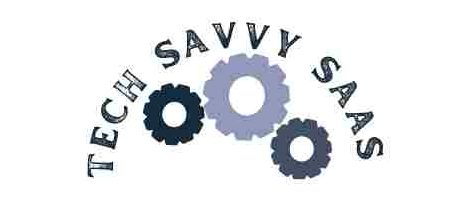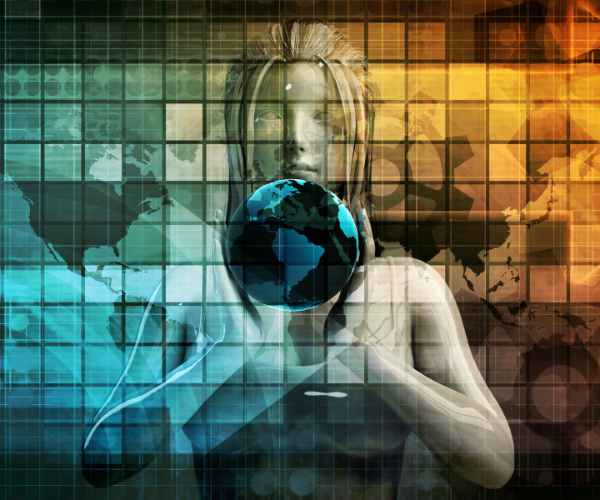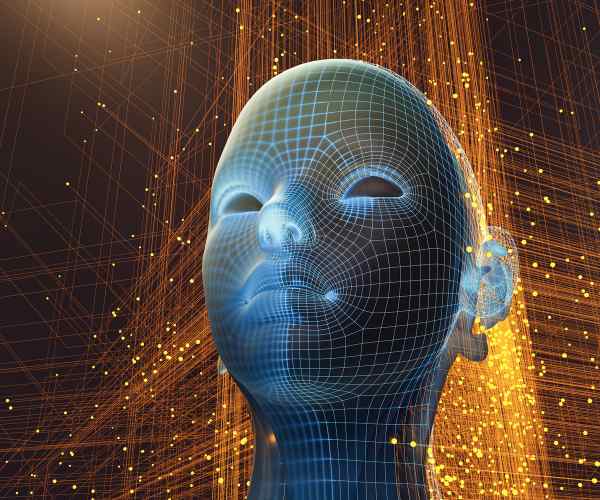The world of modern innovation, where technology marvels shape our lives daily. In an era defined by rapid advancements and groundbreaking discoveries, modern innovation stands at the forefront of societal progress. From electronic technology to intelligent automation, these marvels not only revolutionize industries but also redefine the way we interact with the world around us.
Modern innovation encompasses the relentless pursuit of improvement and advancement in various fields, ranging from smart homes to space exploration. Its significance in today’s society cannot be overstated, as it drives economic growth, enhances quality of life, and addresses complex challenges facing humanity. Whether it’s enhancing daily routines with smart devices or unlocking new possibilities with cloud computing, modern innovation shapes the fabric of our existence.
The purpose of this blog post is to delve into the fundamentals of modern tech marvels, exploring what makes them remarkable, how they have evolved over time, and their implications for the future. By understanding the essence of these marvels, we can gain insights into the transformative power of innovation and its profound impact on our lives. So, let’s embark on a journey to uncover the wonders of modern technology and marvel at the ingenuity shaping our world.
Key Takeaway
- Understanding modern innovation is crucial to navigating the rapidly evolving technological landscape that shapes our daily lives.
- Curiosity serves as the driving force behind exploration and discovery, prompting individuals to seek knowledge and embrace new ideas.
- Lifelong learning is essential for staying abreast of technological advancements and adapting to the changing demands of the digital age.
- Embracing curiosity and fostering a mindset of continuous learning empowers individuals to thrive in an ever-changing world.
- Tech marvels play a pivotal role in shaping the future of society, driving progress in areas such as healthcare, transportation, and communication.
- By exploring the intersection of science, creativity, and technology, we gain insights into the transformative power of innovation.
- As we reflect on our journey of discovery, let us remain inspired by the endless possibilities that lie ahead, fueled by our collective ingenuity.
- Let us continue to embrace curiosity, cultivate a thirst for knowledge, and explore the frontiers of innovation, together shaping a brighter future for generations to come.
- The adventure of discovery awaits. Let’s embark on this journey together, embracing the marvels of modern technology and unlocking the endless potential that lies within.
What Are Tech Marvels?
At the heart of modern innovation lies a collection of tech marvels that continue to push the boundaries of what’s possible. These marvels represent the pinnacle of human ingenuity and creativity, harnessing the power of cutting-edge technologies to revolutionize various industries and domains. From artificial intelligence to IoT, each tech marvel brings forth a unique blend of capabilities that redefine our understanding of what’s achievable.
Consider the impact of smart devices on our daily lives. From smartphones to smartwatches, these devices have become indispensable tools, seamlessly integrating into our routines and empowering us with unprecedented levels of connectivity and convenience. For example, the proliferation of smart homes has transformed the way we interact with our living spaces, allowing for remote control of appliances, energy efficiency optimizations, and enhanced security measures.
Furthermore, the advent of cloud computing has ushered in a new era of scalability and flexibility in data management and processing. Businesses leverage cloud infrastructure to streamline operations, reduce costs, and innovate at a faster pace. For instance, companies like Amazon Web Services and Microsoft Azure offer a myriad of services ranging from data storage to machine learning, enabling organizations to scale their operations dynamically and drive digital transformation.
Personal Experience:
Reflecting on my own experience, I vividly recall the sense of wonder and amazement I felt when encountering a tech marvel for the first time. It was during a visit to a technology expo that I had the opportunity to witness the latest innovations firsthand. From augmented reality experiences to 3D printing demonstrations, each exhibit showcased the incredible potential of modern technology to shape our future. This encounter sparked a curiosity within me, driving me to explore further and unravel the mysteries of the technological landscape.
The Evolution of Modern Innovation
In tracing the evolution of modern innovation, we embark on a journey that spans millennia, from the rudimentary tools of our ancestors to the digital marvels of the 21st century. The story begins in the Stone Age, where early humans crafted simple tools from stones and bones to fulfill their basic needs. These primitive implements laid the foundation for technological progress, marking the dawn of humanity’s ingenuity.
As civilizations emerged and flourished, so too did innovation. Ancient civilizations such as Mesopotamia and Egypt introduced revolutionary inventions that shaped the course of history. One notable example is the Baghdad Battery, believed to be an early form of electric battery dating back to the Parthian period (250 BC–224 AD). While its exact purpose remains a subject of debate among scholars, its existence attests to the ancient quest for harnessing electricity.
The Industrial Revolution of the 18th and 19th centuries marked a pivotal turning point in human history, ushering in an era of unprecedented technological advancement. Innovations such as the steam engine and spinning Jenny revolutionized manufacturing processes, leading to mass production and urbanization on a scale never before seen. This period of rapid industrialization laid the groundwork for the modern technological landscape we inhabit today.
In the 20th century, the pace of innovation accelerated exponentially with the advent of the digital age. The invention of the computer in the mid-20th century paved the way for a new era of computing power and information processing. Visionaries like Alan Turing and Grace Hopper pioneered groundbreaking advancements in computer science, laying the groundwork for the internet and personal computing revolutions.
Today, we find ourselves in the midst of the Silicon Valley renaissance, where innovation thrives at the intersection of technology and entrepreneurship. Companies like Apple, Google, and Facebook are at the forefront of technological innovation, driving progress in areas such as artificial intelligence, machine learning, and augmented reality. The relentless pursuit of innovation continues to shape our world, propelling us towards a future limited only by the bounds of our imagination.
Demystifying Complex Concepts
In a world saturated with technological jargon, understanding the basics of complex concepts like AI (artificial intelligence), IoT (the Internet of Things), and cloud computing is essential for navigating the digital landscape. Let’s unravel these intricate terms and explore how they shape our daily lives.
Artificial intelligence (AI) refers to the simulation of human intelligence in machines that are programmed to mimic cognitive functions such as learning and problem-solving. From virtual assistants like Amazon’s Alexa to self-driving cars developed by companies like Tesla, AI has permeated various aspects of our lives, enhancing efficiency and convenience.
The Internet of Things (IoT) encompasses a network of interconnected devices embedded with sensors, software, and other technologies that enable them to collect and exchange data. Think of smart thermostats that regulate temperature based on occupancy patterns or wearable fitness trackers that monitor heart rate and activity levels. By leveraging IoT, these devices create a seamless ecosystem that enhances our daily routines and improves our overall quality of life.
Cloud computing refers to the delivery of computing services—including servers, storage, databases, networking, software, and analytics—over the internet (“the cloud”) to offer faster innovation, flexible resources, and economies of scale. Companies like Amazon Web Services (AWS), Microsoft Azure, and Google Cloud Platform provide cloud computing services that empower businesses to scale dynamically and innovate at a faster pace.
To better comprehend these concepts, let’s relate them to everyday experiences. Imagine walking into a smart home equipped with IoT devices. As you enter, the lights automatically adjust to your preferred brightness, the thermostat adjusts to your preferred temperature, and your favorite playlist begins to play—all thanks to interconnected devices communicating with each other and adapting to your preferences in real-time.
Now, let’s break down these concepts into a step-by-step guide for beginners:
- Artificial Intelligence (AI):
- Start with the basics: Define AI as the simulation of human intelligence in machines.
- Explain common AI applications: virtual assistants, chatbots, and recommendation systems.
- Discuss how AI learns: machine learning algorithms, training data, and neural networks.
- Provide examples: Siri, Netflix recommendations, and self-driving cars.
- Internet of Things (IoT):
- Define IoT as a network of interconnected devices that collect and exchange data.
- Explain how IoT works: sensors, connectivity, and data analytics.
- Explore IoT applications: smart homes, wearable devices, industrial automation.
- Provide examples: smart thermostats, fitness trackers, and connected cars.
- Cloud Computing:
- Define cloud computing as the delivery of computing services over the internet.
- Explain cloud computing models: infrastructure as a service (IaaS), platform as a service (PaaS), and software as a service (SaaS).
- Discuss cloud deployment models: public cloud, private cloud, and hybrid cloud.
- Provide examples: AWS, Microsoft Azure, and Google Cloud Platform.
The Intersection of Science and Creativity
At the intersection of science and creativity lies a realm of limitless possibilities, where imagination fuels technological advancement and innovation knows no bounds. Let’s delve into this fascinating realm and explore how creativity drives progress in the world of technology.
Creativity serves as the catalyst for innovation, inspiring individuals and organizations to push the boundaries of what’s possible. Whether it’s envisioning groundbreaking products or reimagining existing technologies, creativity drives the engine of progress, propelling us towards a future limited only by our imagination.
One exemplary case study of innovation driven by creativity is Samsung and its ecosystem of products and services. From smartphones to smart TVs, Samsung has continually pushed the envelope with its innovative designs and user-friendly interfaces. Take, for example, the Samsung Galaxy Fold, a revolutionary smartphone that seamlessly transforms into a tablet, demonstrating the company’s commitment to pushing technological boundaries while prioritizing the user experience.
Moreover, creativity intersects with engineering principles to yield remarkable advancements in modern marvels such as 3D printing and intelligent automation. 3D printing, also known as additive manufacturing, enables the creation of complex three-dimensional objects layer by layer, revolutionizing industries ranging from healthcare to aerospace. For instance, companies like Stratasys and 3D Systems are pioneering the use of 3D printing in healthcare by producing patient-specific implants and prosthetics with unprecedented precision and customization.
Intelligent automation, on the other hand, combines artificial intelligence and robotics to automate tasks traditionally performed by humans, leading to increased efficiency and productivity. Companies like Boston Dynamics are at the forefront of intelligent automation, developing advanced robots capable of performing tasks ranging from warehouse logistics to healthcare assistance.
More Post






